9 Fall Garden Tasks You Can’t Ignore
As an Amazon Associate and member of other affiliate programs, I earn from qualifying purchases.
Get great results in your fall garden and be ready for spring. Learn the top nine things you need to do in your garden this fall.
Fall means that the weather is cooling down. It’s time for pumpkins and fall festivals and apple cider! But it’s not time to give up on your garden! There are just a few essential tasks for planting and caring for your garden in the fall.
1. Fall planting
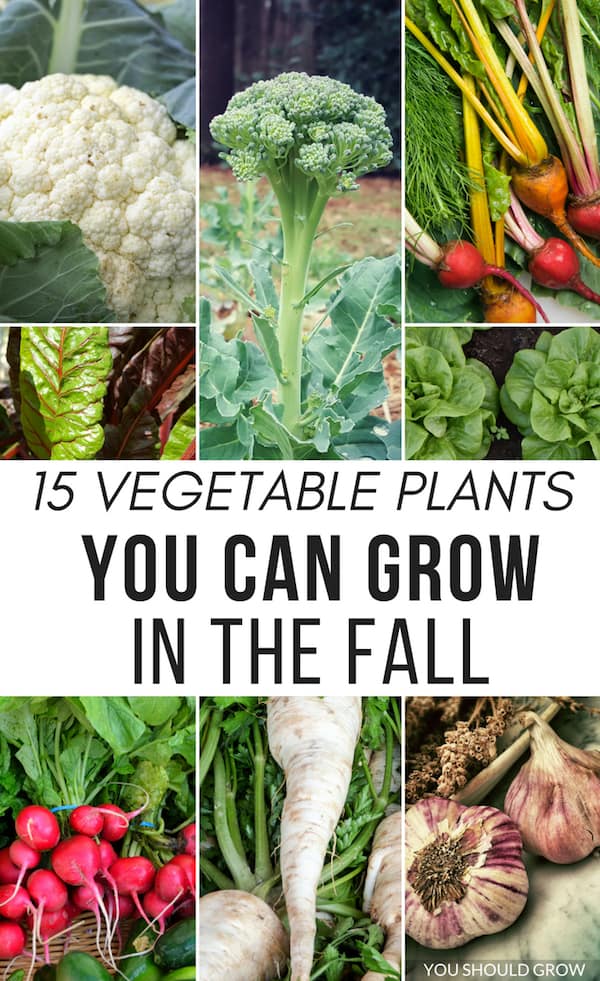
If your first frost date falls in late September or October, you can still plant a fall garden in September.
Using garden planning spreadsheets makes it really easy to find out exactly when you should plant your fall garden. Even if it’s too late to start from seed, you should be able to find plants at a nursery.
Look for frost tolerant vegetables to grow in the fall. Some of these include:
- broccoli
- cauliflower
- lettuce
- kale
- chard
- cabbage
- collards
- parsnips
- spinach
- radishes
- onions
- garlic
- turnips
- beets
- carrots
Planning a fall garden isn’t much different from your spring garden. Just make sure you are watching the weather and have a plan in place to protect your plants from frost at night.
Don’t forget, there are also plenty of fall flowers you can plant to keep color and beneficial insects happy.
2. Pull up dead plants
Go ahead and clean up the summer garden before it gets too cold. Once the plants are dead, it is good practice to remove them as soon as possible. Fungal disease and many garden pests will overwinter in the dead leaves and stems.
Compost only the healthy plants that show no signs of disease. This is especially true of tomatoes which can harbor fungal disease that will spread in your compost.
3. Till the soil
A lot of my gardening friends will say, whoa wait a minute! A no-till garden is THE way to go!
Sure, tilling does have some drawbacks. When done in excess, it stirs up weed seeds, disturbs the soil bacteria, fungi, and earthworm environment, and increases erosion.
But there are some really good reasons you might decide to till your garden.
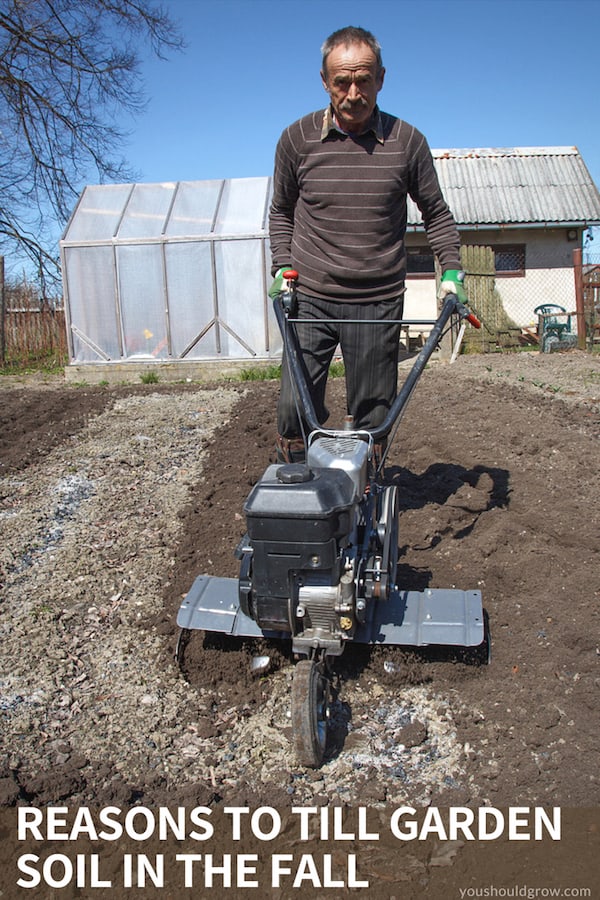
For one thing, tilling is the quickest way to get the soil ready for planting especially if you’re starting a new garden bed. Tilling the soil helps break up clumps in hard and compacted soil. It will also break up the roots and kill some weeds.
It only kills the weeds currently growing on the surface of the soil, and plenty of weed seeds will be stimulated to grow, so it’s only a temporary fix.
Tilling in the fall can also expose pupae of caterpillars and beetles which should be removed when seen. You may also use a tiller to incorporate compost, manure, or leaf matter.
How to till your garden correctly
If you decide to till your fall garden, mow down any weeds or cover crop first and till the soil a couple of days later. Then wait 4-7 days after tilling to apply compost, manure, or mulch so that the weeds that were pulled up at tilling have time to dry out and die.
Then, it is REALLY, REALLY important to mulch heavily on top of your garden soil or use a cover crop as a living mulch.
Mulching/covering is important in either a no-till or a tilled garden and is really the secret to decreasing weed issues and improving garden results.
Tilling can be done with a hand tiller, electric/gas powered tiller, or with the tractor. Use a rake or drag harrow to smooth out the surface of your tilled soil before planting or seeding with cover crops.
4. Spread cover crops
Cover crops are used to add nutrients and organic matter to your soil, protect the soil from drying out and suppress weed growth.
In our garden, we use mammoth red clover, Austrian winter peas, winter rye, and ryegrass for fall cover crops.
Cover crops can be used in your garden beds the same way we use them on the farm. Choose red clover for an easy to manage nitrogen-fixing cover crop for your garden beds.
The key to cover crops is to plant them thick and cut them down before they go to flower and seed. When they flower, they will begin using up the nutrients they have added to the soil.
6. Plant bulbs and trees
If you love early spring daffodils and tulips, fall is the time to plant them. It’s also the perfect time to plant shrubs as well as ornamental and fruit trees.
Make sure your first frost is still a few weeks out so new plants have time to adjust to your garden before the freezing weather hits.
7. Build row covers to extend the growing season
If you decide to go ahead and plant a fall garden right now, make sure you have a plan in place if it does frost while your plants are still growing. Frost protection can be as simple as a fabric cover, like Agribon, that lays over the top of the plants at night.
Any fabric cover used this way will work fine for early frosts when daytime temps are still well above freezing.
For a more flexible solution, Agribon or semi-transparent plastic sheeting can be placed of over hoops (like these) to create a small tunnel which can be left in place day and night.
Just be careful not to let it get too hot under plastic. Opening the ends of the tunnel during the day should provide enough airflow for your plants.
Another option is to purchase or build a cold frame for your plants.
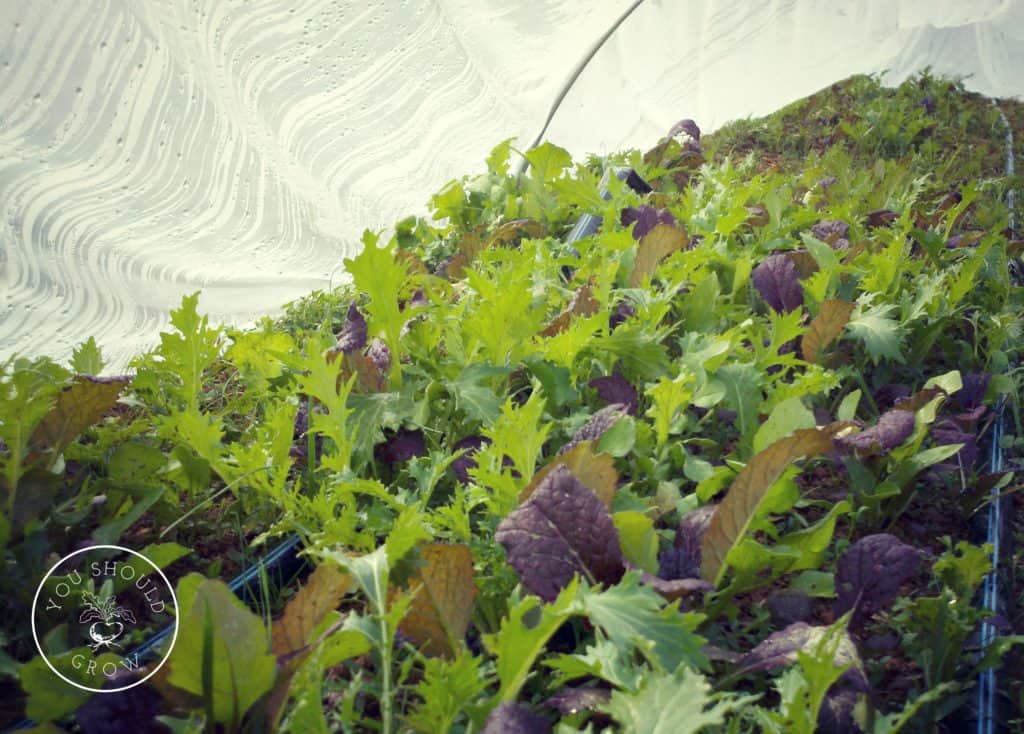
If your plants are very sensitive to frost, make sure they’re in a container that can be moved onto a covered or glass porch or even next to a sunny window in the house for the winter.
8. Mulch your beds
As mentioned earlier in the post, mulching is the most important thing to do for your garden.
Mulching over the winter serves a few purposes: you protect the soil from erosion, block out light to decrease weed growth, and adds organic matter to your soil which will help your garden be healthier in the spring.
Things to note:
- Mulch needs to be at least 3 inches thick for the best results.
- You can use cardboard, newspaper, grass clippings and fallen leaves layered under wood chips or straw
- Mulch can be a good place for pests to hide out for the winter. If your garden is not planted (lying fallow) for the fall, mulch after your first freeze to decrease the opportunity for pests to make themselves a cozy home.
- Mulch is an excellent insulator for plants that can withstand some freezing temps and snow. If you have planted your garden for the fall and winter, lay down a thick layer of mulch as soon as your plants are 3-4 inches tall and before the first frost.
- Mulch can be applied in addition to cover crops if the cover crop does not come up thick enough to cover all the soil.
9. Prune trees and shrubs
Many plants, trees, and shrubs do well with a pruning in the fall. Cut back any plants that have overgrown their space and thin out branches so they don’t crowd themselves.
Be careful of pruning while the weather is still warm. If the plant hasn’t received the signal to go dormant yet, they might start sprouting new growth that will be susceptible to frostbite when the cold weather hits.
It’s also time to divide perennial plants like daylilies, ornamental grasses, and hostas.
What not to do: Don’t fertilize your garden beds
Fertilizing should be done in early spring and summer. As warm weather tapers off, plants will be slowing down their growth, so they won’t be needing extra nutrients.
3 Fall tasks near-the-garden
- Don’t forget to clean up and store your garden tools.
- Make sure you save seed from this summer’s harvest.
- Check your home improvement and garden supply stores for end-of-season sales to stock up for next year.


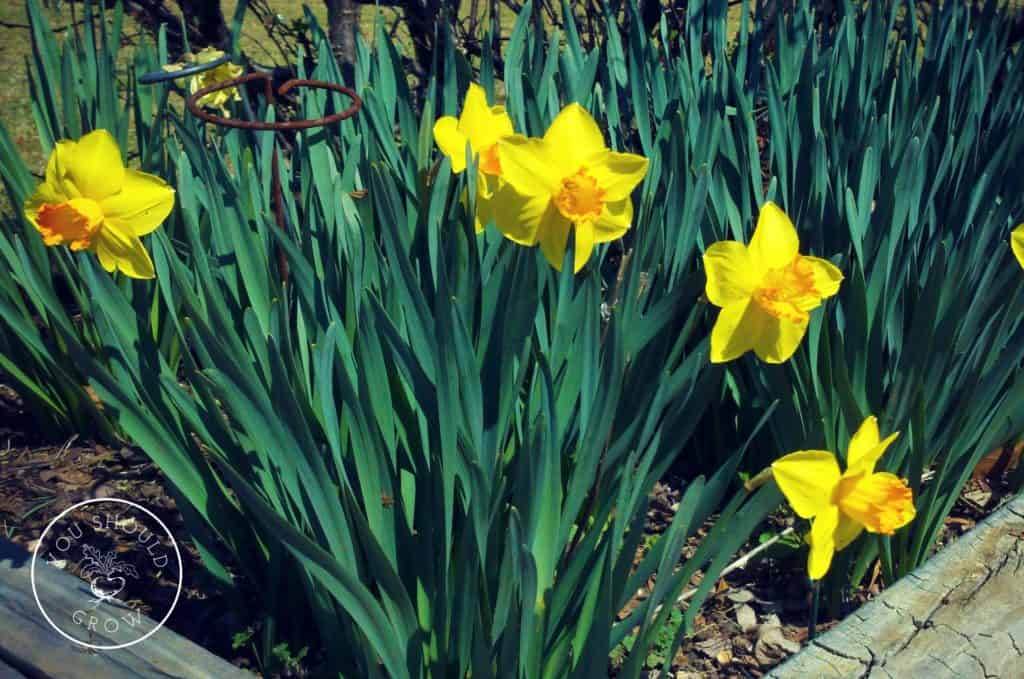
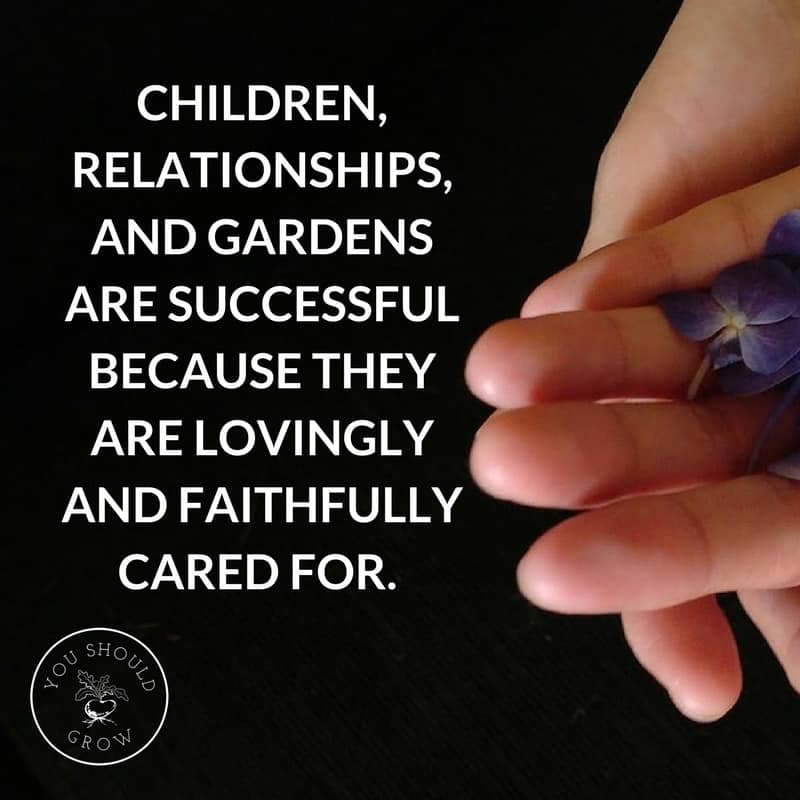

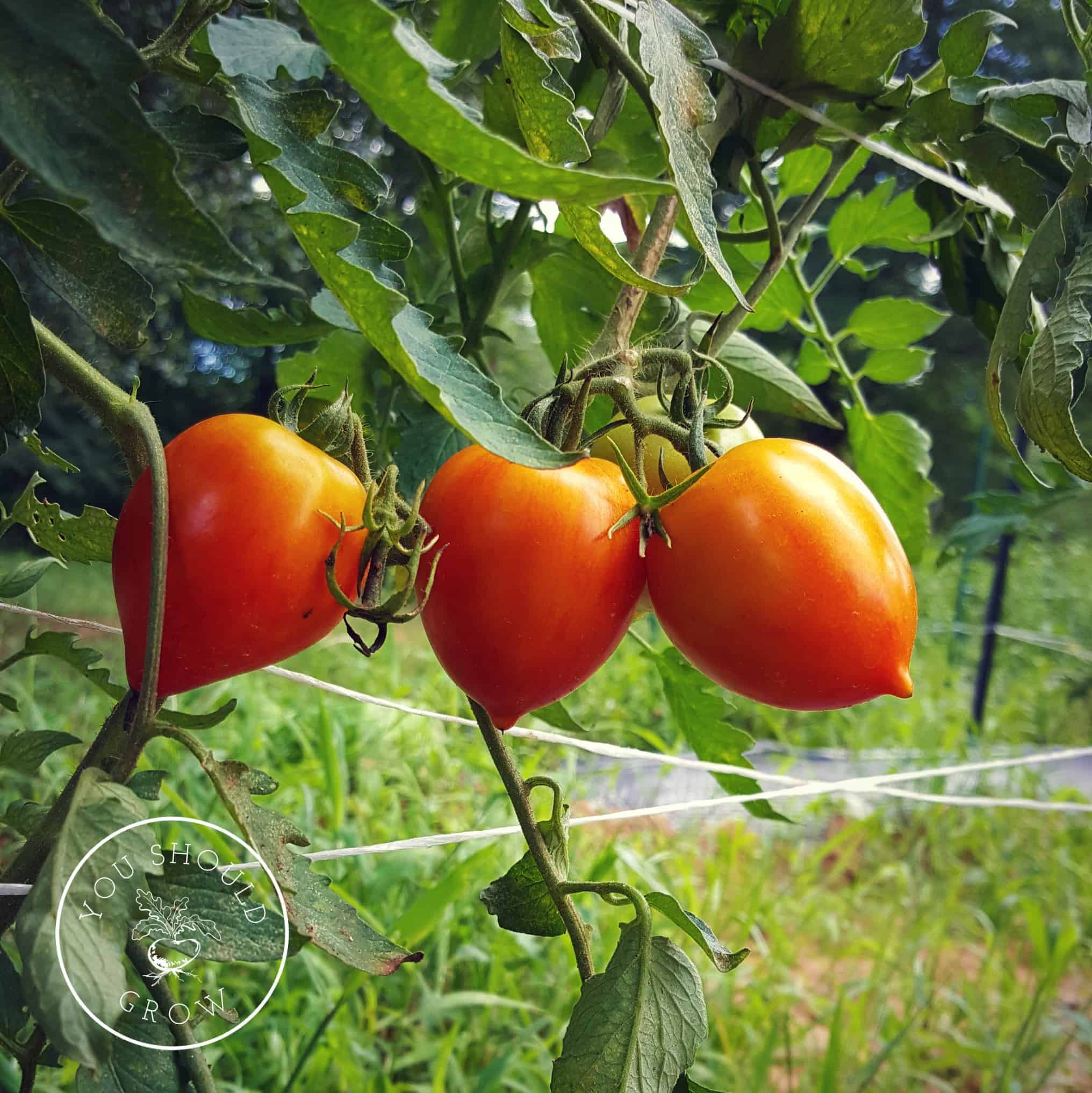
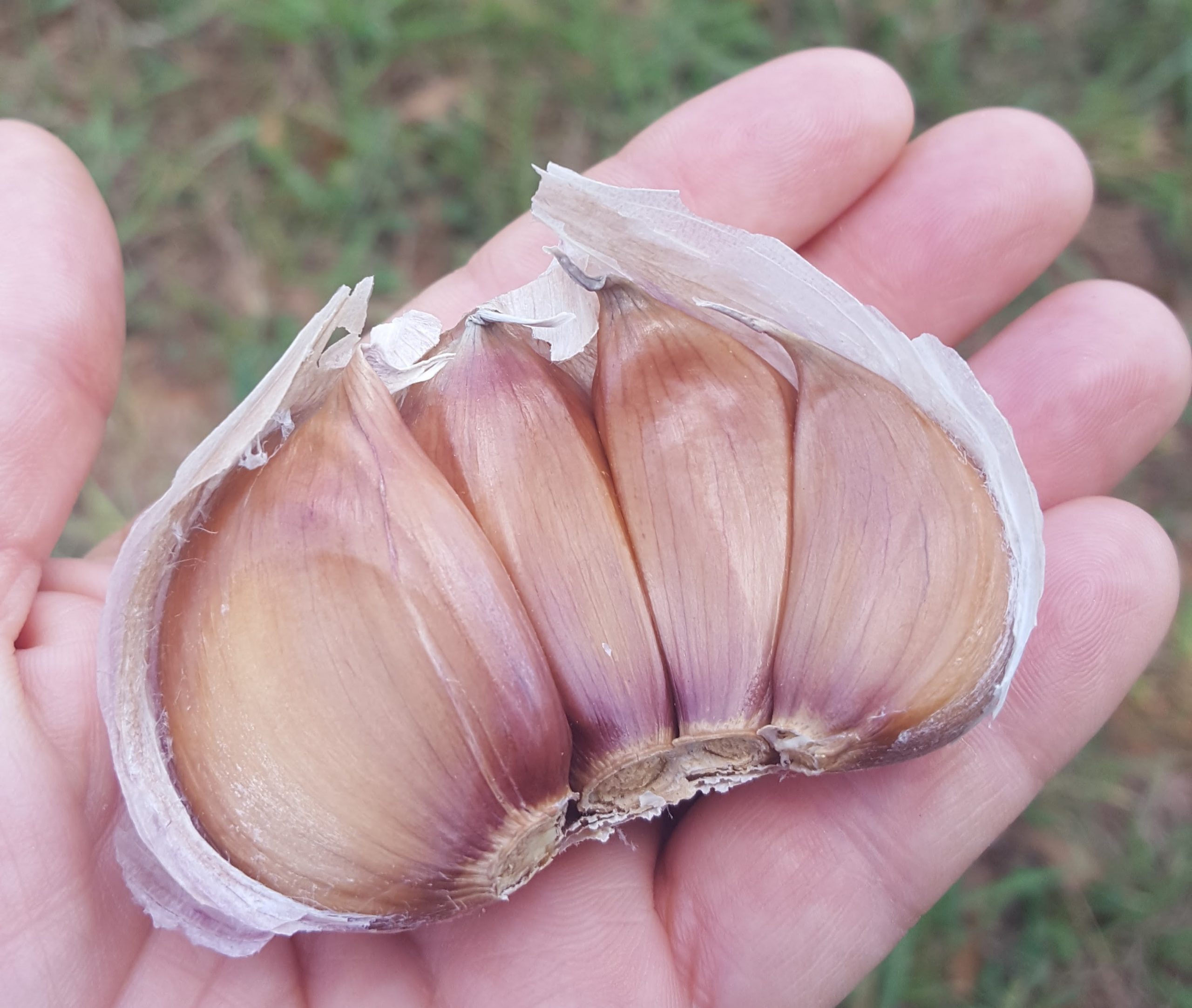

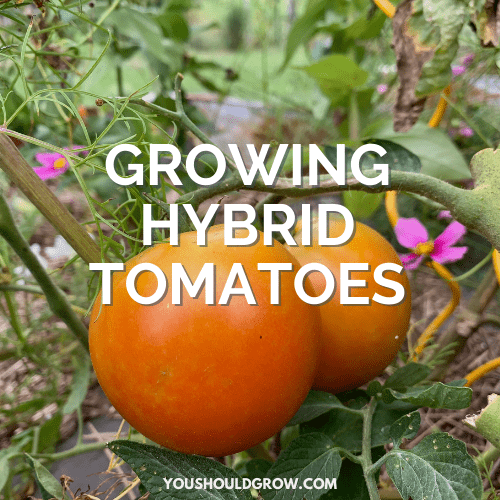
It’s showing snow on Monday here. Sigh 😉 Someday I would like to get row covers to help extend a bit of our three month growing season.
Snow is beautiful, though! 🙂
This is good to know! Thanks. Pinned.
Wow, this is so helpful for a soon-to-be-hopefully blooming gardener like me! 🙂 Thank you!! Your property in Georgia sounds lovely and exciting!
I am crop covering as I write this!